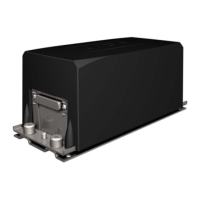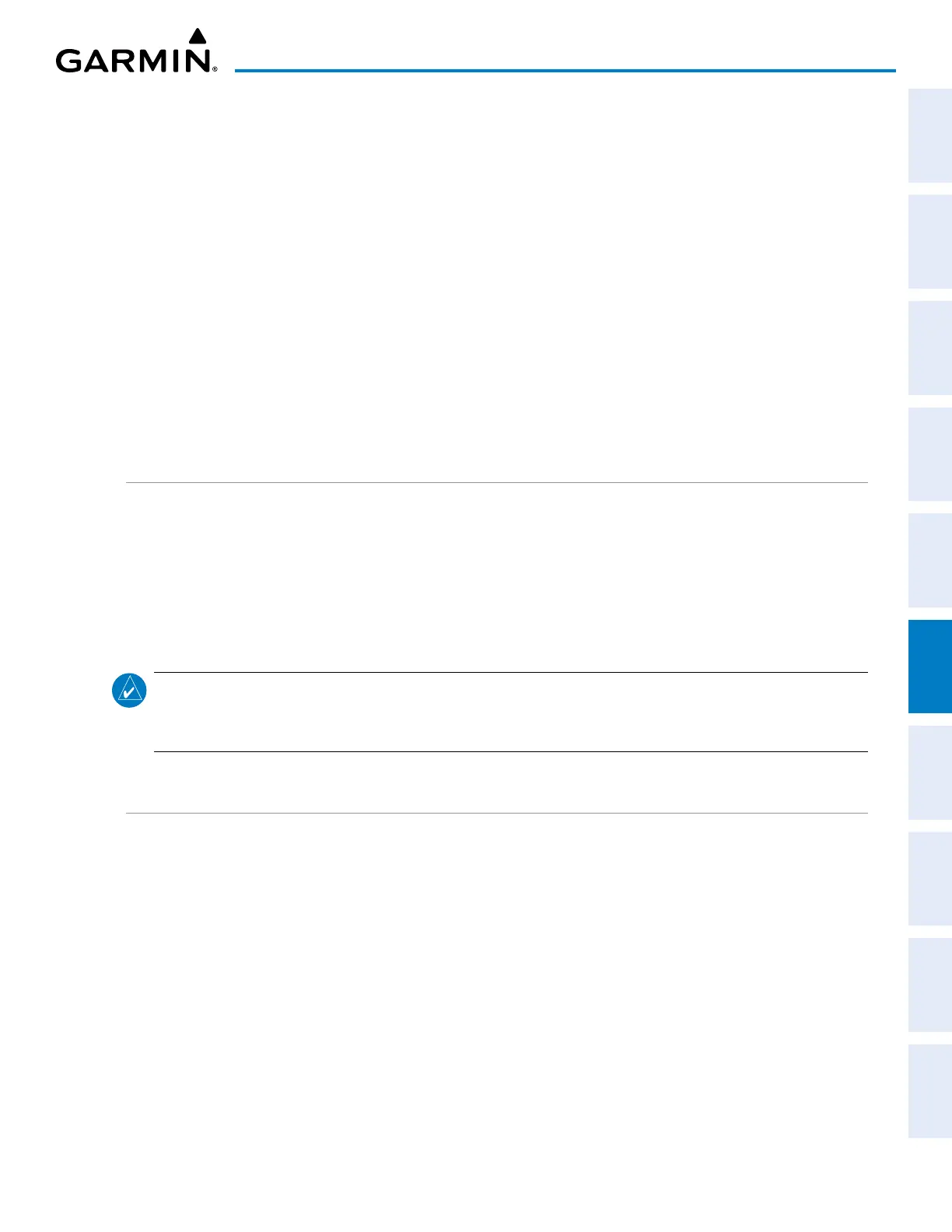190-02692-00 Rev. A
Garmin G1000 Pilot’s Guide for the Piper PA-32 Saratoga 363
HAZARD AVOIDANCE
SYSTEM
OVERVIEW
FLIGHT
INSTRUMENTS
EIS
AUDIO PANEL
& CNS
FLIGHT
MANAGEMENT
HAZARD
AVOIDANCE
AFCS
ADDITIONAL
FEATURES
APPENDICES INDEX
and rebroadcasting it on the other link. For example, two aircraft are in the service volume for a ground
station, and one is transmitting on 1090 MHz and the other on 978 MHz, the ground station retransmits the
data from each aircraft on the other link to ensure the two aircraft can “see” each other.
TRAFFIC INFORMATION SERVICE-BROADCAST (TIS-B)
TIS-B provides the bridge between the radar-based ATC system and the ADS-B-based system. When an
ADS-B In or Out capable aircraft is within the service volume of an FAA ADS-B ground station, the ground
station broadcasts a portion of the ATC radar data to the aircraft. This aircraft is then included in the list of
aircraft being provided TIS-B service and is then considered a “TIS-B participant.”
TIS-B coverage is available when the aircraft is within ground station coverage, in Secondary Surveillance
Radar coverage, and the other aircraft is also in Secondary Surveillance Radar coverage, and is transmitting
its altitude.
The ground station provides ATC radar information for other aircraft within ±3,500 feet and 15 NM of the
participant, to include altitude, position, ground speed, and ground track. TIS-B broadcasts occur once every
three to thirteen seconds, depending on the characteristics of the ground station providing the TIS-B service.
ADS-B WITH TAS
When an optional Skywatch SKY497 Traffic Advisory System (TAS) is also installed and operating with the
optional ADS-B Traffic, the SKY497 TAS will receive traffic information and attempt to match (or “correlate”)
this traffic with the corresponding ADS-B traffic information. When a correlation is made, only the traffic
with the most accurate information is displayed to the flight crew. Any traffic that is not correlated (i.e., only
detected by one system but not the other) will also displayed for the flight crew. This correlation of traffic by
the ADS-B improves the accuracy of the traffic displayed, while reducing the occurrence of the same aircraft
being displayed twice.
NOTE: When operating on the edges of ATC radar coverage or when using an optional active traffic system
providing intermittent traffic data, a single aircraft may be briefly or periodically depicted as two aircraft on
the display.
Either the TAS or the ADS-B unit can issue a traffic alert.
CONFLICT SITUATIONAL AWARENESS & ALERTING
Conflict Situational Awareness (CSA) is an alerting algorithm which provides ADS-B traffic alerting similar to
the TAS systems discussed previously.
The SKY497 with ADS-B issues a voice alert when a Traffic Advisory (TA) is displayed, for example “Traffic!
Two O’clock, Low, Two Miles.”
The own aircraft altitude above terrain determines the sensitivity of the CSA algorithm to minimize nuisance
alerts. Radar Altitude (if available), Height Above Terrain, and Geodetic Sea Level (GSL) altitude are used to
adjust the sensitivity of the CSA algorithm in accordance with the following table:

